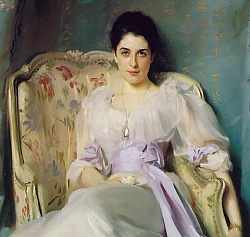Simple present tense
Simple Present tense is used to describe habitual actions that occur with some frequency and does not refer to whether it is happening at present.
First use: Repeated actions
Use the Simple Present to express the idea that an action is repeated or usual. The action can be a habit, a hobby, a daily event, a scheduled event or something that often happens. It can also be something a person often forgets or usually does not do.
Examples:
- I play tennis.
- She does not play tennis.
- Does he play tennis?
- The train leaves every morning at 8 AM.
- The train does not leave at 9 AM.
- When does the train usually leave?
- She always forgets her purse.
- He never forgets his wallet.
- Every twelve months, the Earth circles the Sun.
- Does the Sun circle the Earth?
Second Use: Facts or generalizations
The Simple Present can also indicate the speaker believes that a fact was true before, is true now, and will be true in the future. It is not important if the speaker is correct about the fact. It is also used to make generalizations about people or things.
Examples:
- Cats like milk.
- Birds do not like milk.
- Do pigs like milk?
- California is in America.
- California is not in the United Kingdom.
- Windows are made of glass.
- Windows are not made of wood.
- New York is a small city.
Third use: Scheduled events in the near future
Speakers occasionally use Simple Present to talk about scheduled events in the near future. This is most commonly done when talking about public transportation, but it can be used with other scheduled events as well.
Examples:
- The train leaves tonight at 6 PM.
- The bus does not arrive at 11 AM, it arrives at 11 PM.
- When do we board the plane?
- The party starts at 8 o'clock.
- When does class begin tomorrow?
Fourth use: Non continuous verbs
Speakers sometimes use the Simple Present to express the idea that an action is happening or is not happening now. This can only be done with Non-Continuous-Verbs and certain Mixed Verbs.
Examples:
- I am here now.
- She is not here now.
- He needs help right now.
- He does not need help now.
- He has his passport in his hand.
- Do you have your passport with you?
Simple past tense
Pablo Picasso lived France.
He worked a lot and painted many pictures.
Simple Past tense is used to describe actions that have happened at an earlier time and have already done, for example:
She cleaned her house.
I broke the window.
I broke the window.
1. To form the simple past tense of regular verbs in affirmative statements, add –ed to the base
verb.
2. In negative statements, use did not + a base verb.
3. In questions, use did + a base verb + the subject.
Affirmative Statements | Negative Statements | |||
Subject | Past tense verb | Subject | Did not/ Didn’t | Base verb |
I | Worked. | I | Did not Didn’t | Work. |
You | You | |||
He/ She/ It | He/ She / It | |||
We | We | |||
They | They | |||
We Change the spelling of some regular verbs before adding –ed.
Base verb ending | Rule | Example |
Most verbs | Add –ed. | Start Started |
Obey Obeyed | ||
Predict Predicted | ||
The verb ends in a consonant + e. | Add –d. | Live Lived |
Move Moved | ||
Decide Decided | ||
The verb ends in a single vowel + a single consonant. | Double the consonant, Add –ed. | Stop Stopped |
Plan Planned | ||
Prefer Preferred | ||
Exceptions: Do not double w or x. | Fix Fixed | |
Show Showed | ||
If a verb has two or more syllables and the stress is not on the last syllable, do not double the consonant. | Open Opened | |
Travel Traveled | ||
Exit Exited | ||
Color Colored | ||
The verb ends in a consonant + y. | Change y to i and add –ed. | Worry Worried |
Study Studied | ||
The verb ends in ie. | Add –d. | Tie Tied |
Die Died |
Did Picasso paint pictures of his wives?
Yes, he did. He painted a lot of them.
Use the simple past tense to talk about actions and situations completed in the past. We often say when the situation or action happened (for example, yesterday, and last night).
Activities
I found great activities for this topics on internet. So I hope that you make those activities. And apply the knowledge acquired.
Appendix
Also, I consider a list of regular and irregular verbs. That is helpful for you.



No hay comentarios:
Publicar un comentario